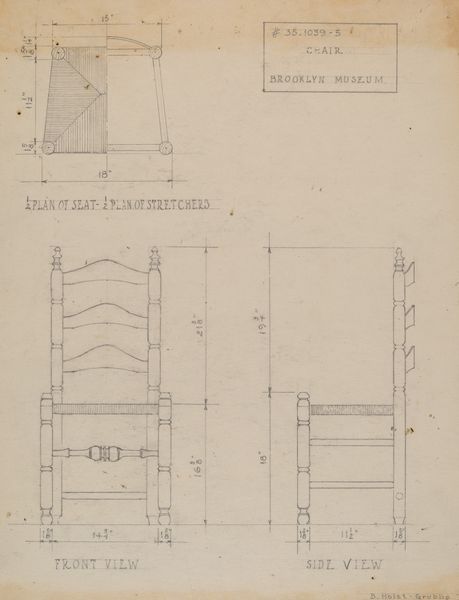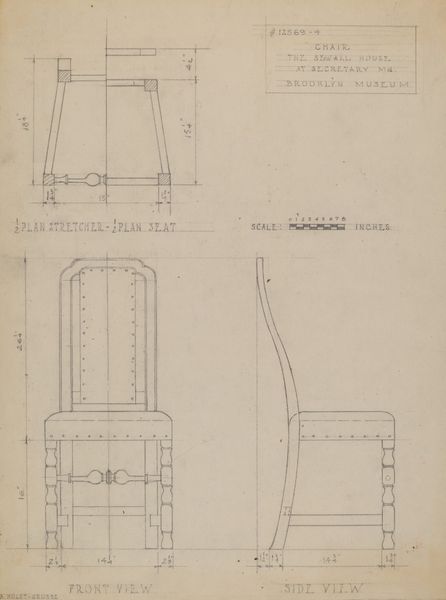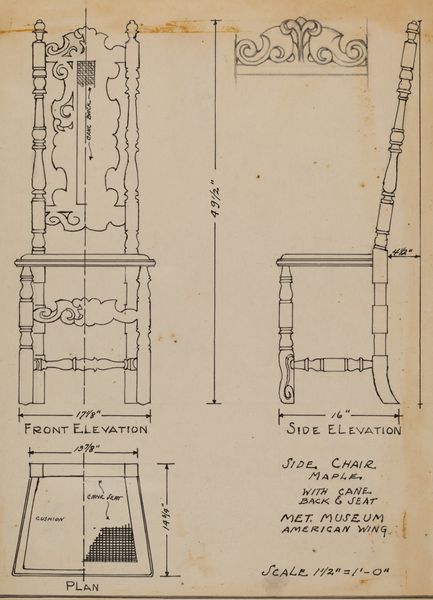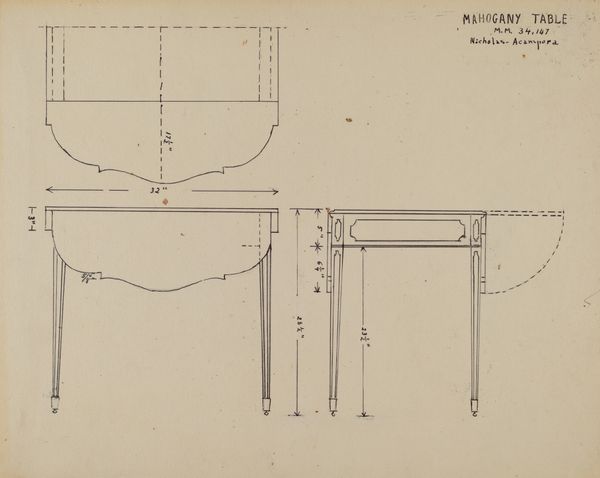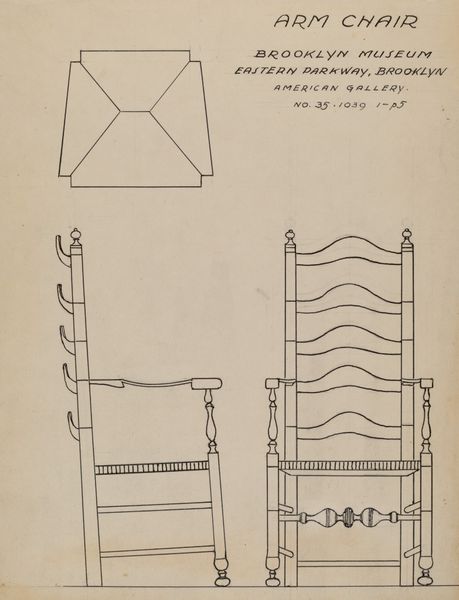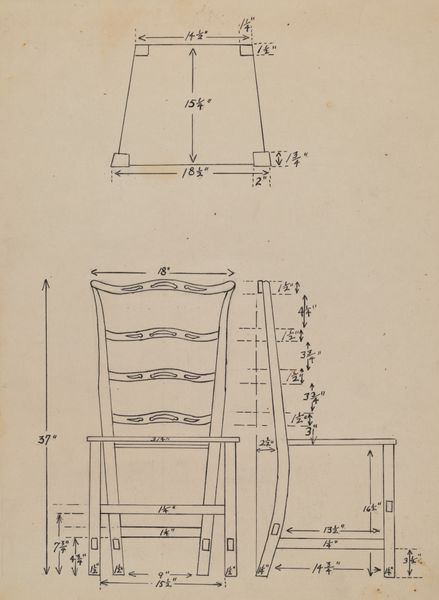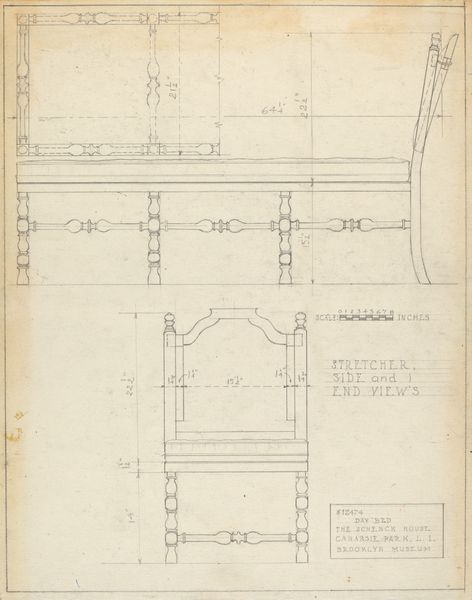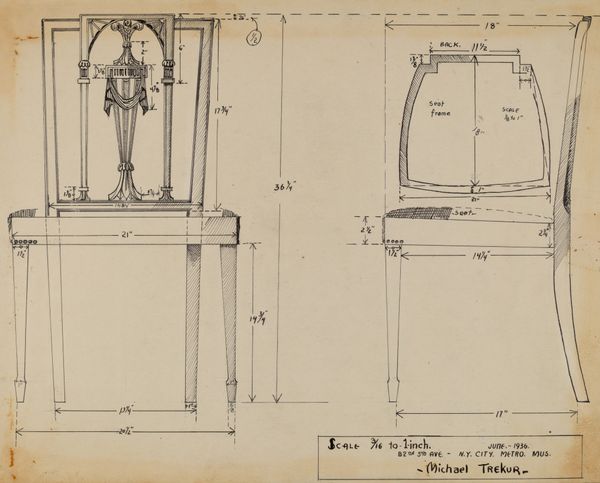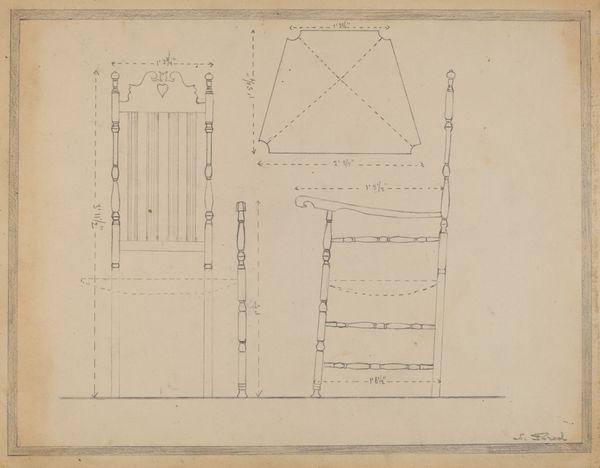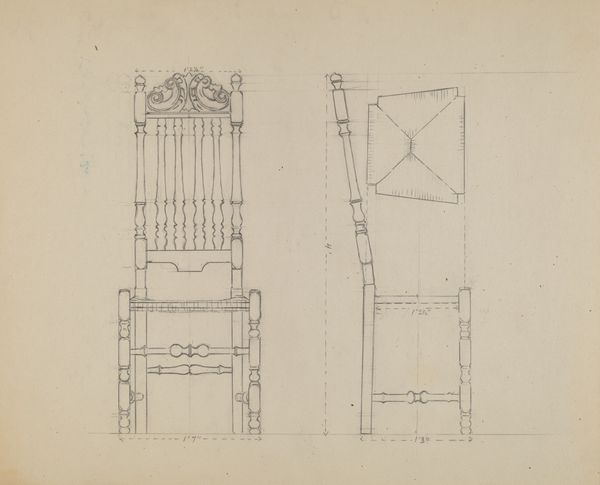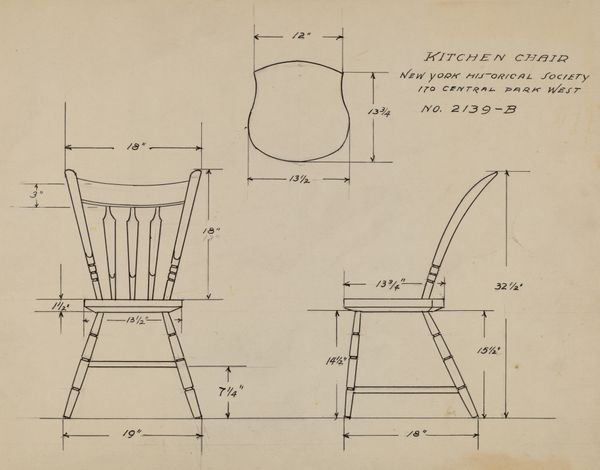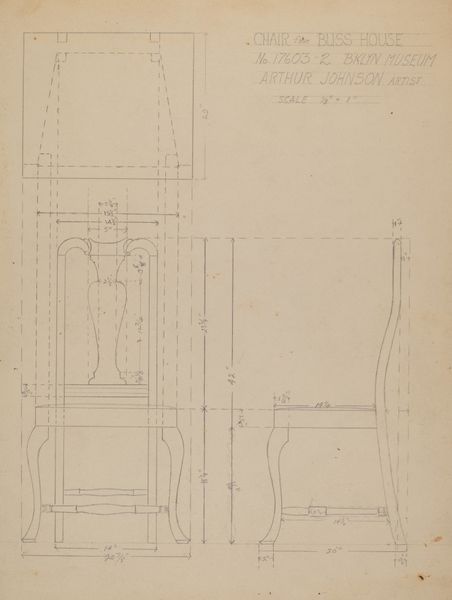
drawing, architecture
#
portrait
#
architectural sketch
#
drawing
#
aged paper
#
toned paper
#
homemade paper
#
sketch book
#
personal sketchbook
#
geometric
#
architectural section drawing
#
technical sketch
#
architectural drawing
#
architecture drawing
#
architecture
Dimensions: overall: 26.2 x 21.2 cm (10 5/16 x 8 3/8 in.)
Copyright: National Gallery of Art: CC0 1.0
Editor: Here we have a drawing entitled "Armchair," made around 1937 by B. Holst-Grubbe. It seems to be an architectural plan, complete with precise measurements, drawn on what looks like toned paper. What strikes me most is the combination of technical precision with the warmth of the aged paper. How do you interpret this work? Curator: It is fascinating how a simple sketch of an armchair can evoke so much. Blueprints are potent symbols. They suggest aspiration and cultural memory. Consider, blueprints are the very beginning of any built structure, a symbolic stage in our human drive to create and leave our mark. Here, the artist has carefully transcribed it by hand. Doesn’t it ask you to reflect upon what we choose to preserve, or rebuild? Editor: That’s interesting – I hadn’t thought of it as being about preservation! But now I see how the old paper and the careful, almost reverential lines suggest something of enduring value. Curator: And beyond the simple domesticity of the chair, what other ideas of "home" might it evoke? Architectural drawings are symbols of power and identity. This could represent the rise and fall of design trends, aspirations for better living. Perhaps consider why this armchair mattered enough to be documented with such precision. Editor: So it's not just about the chair itself, but about what the chair represents culturally? Curator: Precisely. The chair becomes an icon for comfort, design, and a specific era. The technical drawing on the toned paper is like a memory trigger. I imagine Holst-Grubbe meticulously detailing an object worthy of note, a connection to home that could be easily mass produced…or soon, lost to time. Editor: I see! It is so thought-provoking to see this piece beyond its surface appearance. Thanks for showing me the deeper layers of meaning. Curator: My pleasure! Exploring symbols within art can unlock hidden histories.
Comments
No comments
Be the first to comment and join the conversation on the ultimate creative platform.
